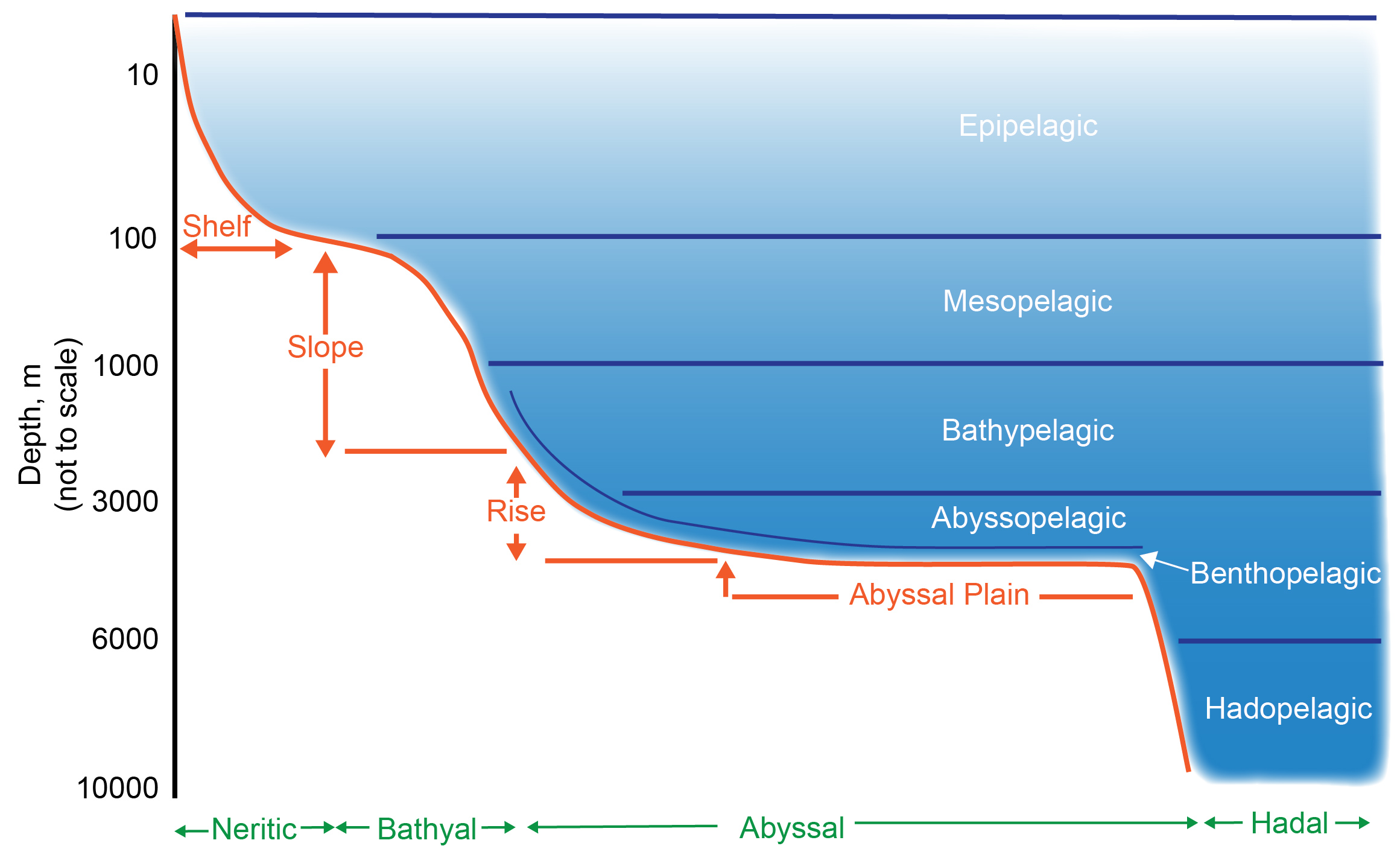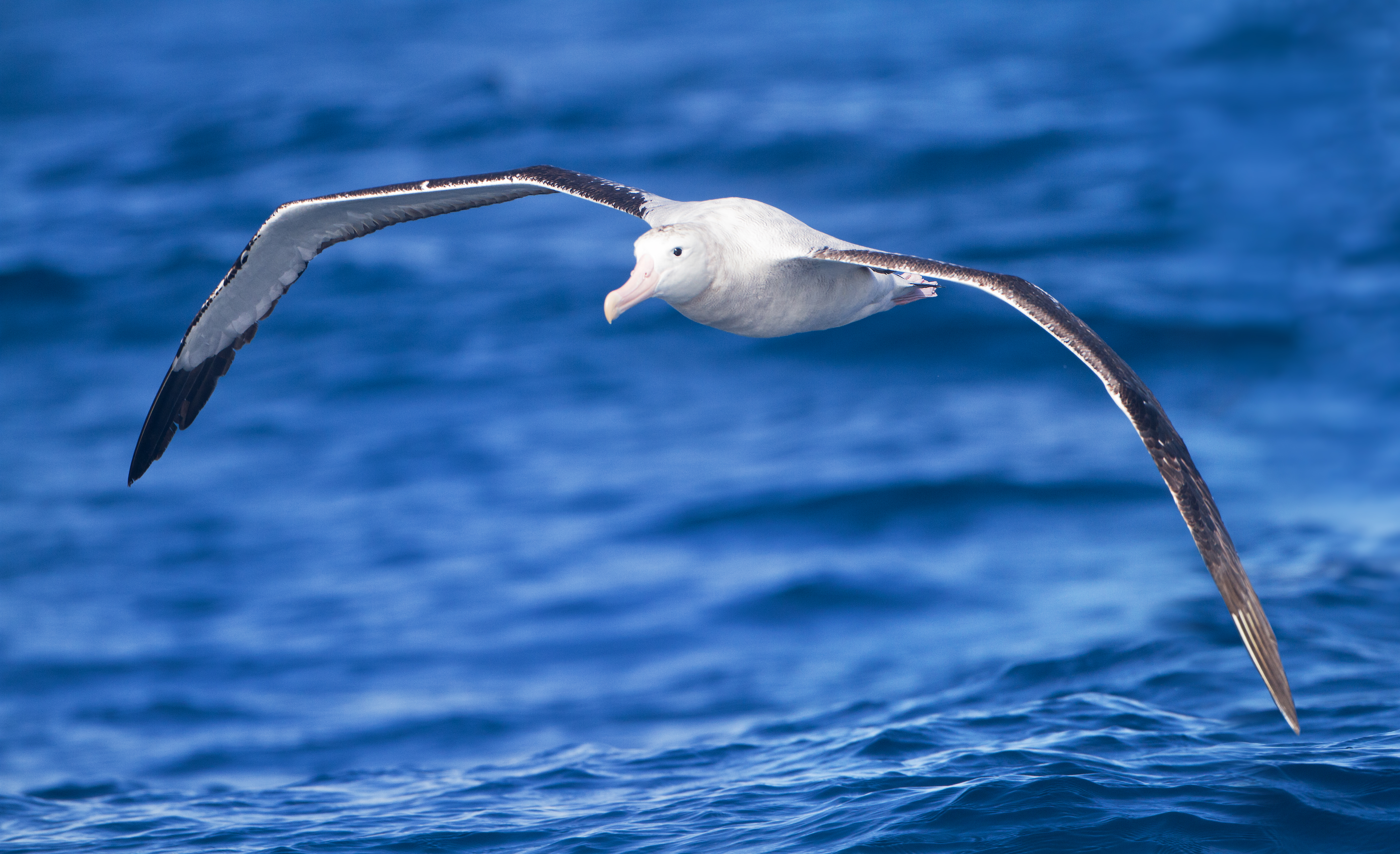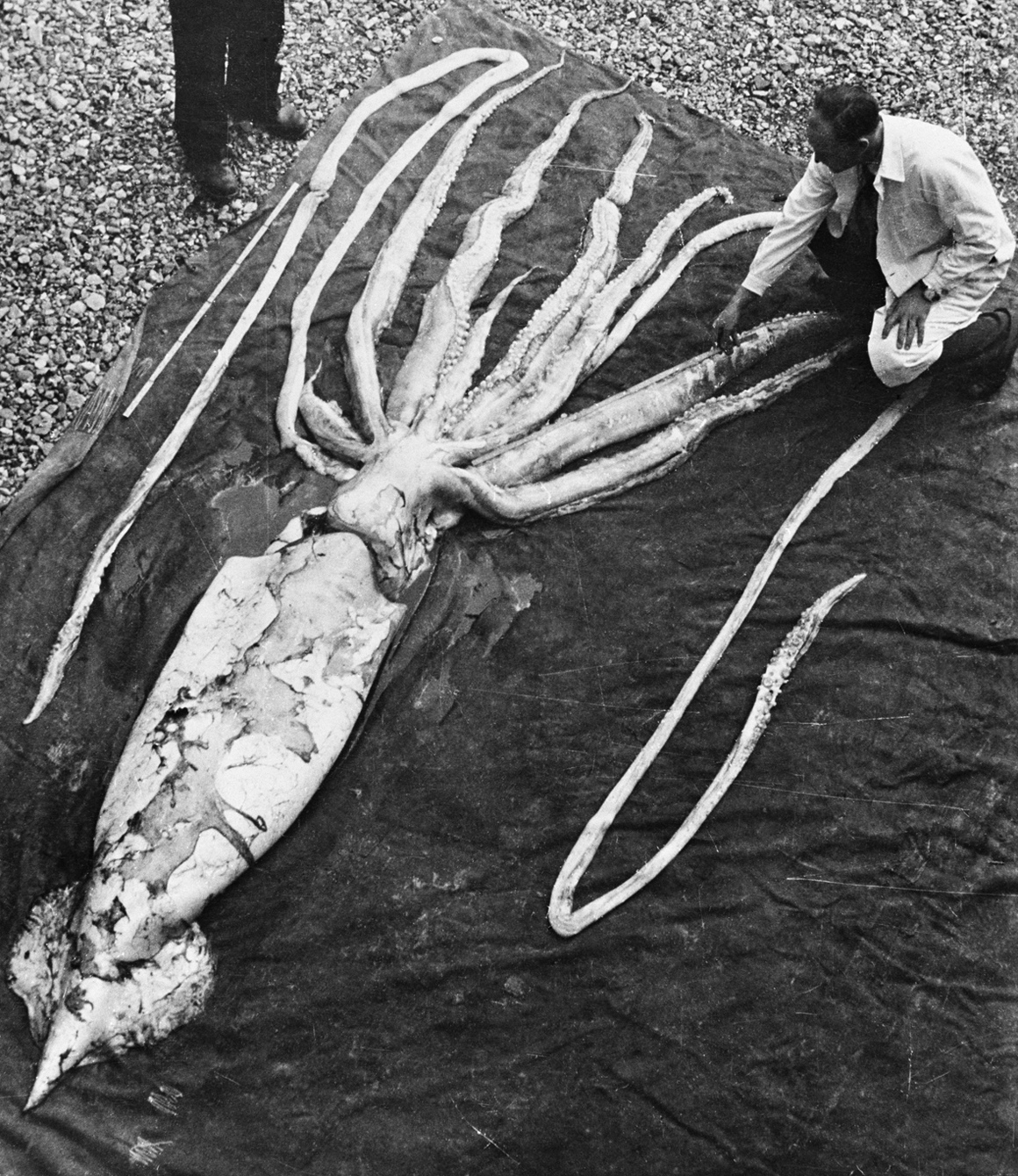|
Hadal
The hadal zone, also known as the hadopelagic zone, is the deepest region of the ocean, lying within oceanic trenches. The hadal zone ranges from around below sea level, and exists in long, narrow, topographic V-shaped depressions. The cumulative area occupied by the 46 individual hadal habitats worldwide is less than 0.25% of the world's seafloor, yet trenches account for over 40% of the ocean's depth range. Most hadal habitat is found in the Pacific Ocean, the deepest of the conventional oceanic divisions. Terminology and definition Historically, the hadal zone was not recognized as distinct from the abyssal zone, although the deepest sections were sometimes called "ultra-abyssal". During the early 1950s, the Danish '' Galathea II'' and Soviet '' Vityaz'' expeditions separately discovered a distinct shift in the life at depths of not recognized by the broad definition of the abyssal zone. The term "hadal" was first proposed in 1956 by Anton Frederik Bruun to describe the ... [...More Info...] [...Related Items...] OR: [Wikipedia] [Google] [Baidu] |
Abyssal Zone
The abyssal zone or abyssopelagic zone is a layer of the pelagic zone of the ocean. The word ''abyss'' comes from the Greek word (), meaning "bottomless". At depths of , this zone remains in perpetual darkness. It covers 83% of the total area of the ocean and 60% of Earth's surface. The abyssal zone has temperatures around through the large majority of its mass. The water pressure can reach up to . As there is no light, photosynthesis cannot occur, and there are no plants producing molecular oxygen (O2), which instead primarily comes from ice that had melted long ago from the polar regions. The water along the seafloor of this zone is largely devoid of molecular oxygen, resulting in a death trap for organisms unable to quickly return to the oxygen-enriched water above or to survive in the low-oxygen environment. This region also contains a much higher concentration of nutrient salts, like nitrogen, phosphorus, and silica, due to the large amount of dead organic material t ... [...More Info...] [...Related Items...] OR: [Wikipedia] [Google] [Baidu] |
Benthic
The benthic zone is the ecological region at the lowest level of a body of water such as an ocean, lake, or stream, including the sediment surface and some sub-surface layers. The name comes from the Ancient Greek word (), meaning "the depths". Organisms living in this zone are called benthos and include microorganisms (e.g., bacteria and fungi) as well as larger invertebrates, such as crustaceans and polychaetes. Organisms here, known as bottom dwellers, generally live in close relationship with the substrate and many are permanently attached to the bottom. The benthic boundary layer, which includes the bottom layer of water and the uppermost layer of sediment directly influenced by the overlying water, is an integral part of the benthic zone, as it greatly influences the biological activity that takes place there. Examples of contact soil layers include sand bottoms, rocky outcrops, coral, and bay mud. Description Oceans The benthic region of the ocean begins at the ... [...More Info...] [...Related Items...] OR: [Wikipedia] [Google] [Baidu] |
Ocean
The ocean is the body of salt water that covers approximately 70.8% of Earth. The ocean is conventionally divided into large bodies of water, which are also referred to as ''oceans'' (the Pacific, Atlantic, Indian Ocean, Indian, Southern Ocean, Antarctic/Southern, and Arctic Ocean),"Ocean." ''Merriam-Webster.com Dictionary'', Merriam-Webster, https://www.merriam-webster.com/dictionary/ocean . Accessed March 14, 2021. and are themselves mostly divided into seas, gulfs and Lists of bodies of water#Seawater bodies, subsequent bodies of water. The ocean contains 97% of Water distribution on Earth, Earth's water and is the primary component of Earth's hydrosphere, acting as a huge Ocean heat content, reservoir of heat for Earth's energy budget, as well as for its carbon cycle and water cycl ... [...More Info...] [...Related Items...] OR: [Wikipedia] [Google] [Baidu] |
Deep Sea
The deep sea is broadly defined as the ocean depth where light begins to fade, at an approximate depth of or the point of transition from continental shelves to continental slopes. Conditions within the deep sea are a combination of low temperatures, darkness, and high pressure. The deep sea is considered the least explored Earth biome as the extreme conditions make the environment difficult to access and explore. Organisms living within the deep sea have a variety of adaptations to survive in these conditions. Organisms can survive in the deep sea through a number of feeding methods including scavenging, predation and filtration, with a number of organisms surviving by feeding on marine snow. Marine snow is organic material that has fallen from upper waters into the deep sea. In 1960, the bathyscaphe ''Trieste'' descended to the bottom of the Mariana Trench near Guam, at , the deepest known spot in any ocean. If Mount Everest () were submerged there, its peak would be more ... [...More Info...] [...Related Items...] OR: [Wikipedia] [Google] [Baidu] |
Pelagic
The pelagic zone consists of the water column of the open ocean and can be further divided into regions by depth. The word ''pelagic'' is derived . The pelagic zone can be thought of as an imaginary cylinder or water column between the surface of the sea and the bottom. Conditions in the water column change with depth: pressure increases; temperature and light decrease; salinity, oxygen, micronutrients (such as iron, magnesium and calcium) all change. In a manner analogous to stratification in the Earth's atmosphere, the water column can be divided vertically into up to five different layers (illustrated in the diagram), with the number of layers depending on the depth of the water. Marine life is affected by bathymetry (underwater topography) such as the seafloor, shoreline, or a submarine seamount, as well as by proximity to the boundary between the ocean and the atmosphere at the ocean surface, which brings light for photosynthesis, predation from above, and wind st ... [...More Info...] [...Related Items...] OR: [Wikipedia] [Google] [Baidu] |
Ocean Trench
Oceanic trenches are prominent, long, narrow topographic depressions of the ocean floor. They are typically wide and below the level of the surrounding oceanic floor, but can be thousands of kilometers in length. There are about of oceanic trenches worldwide, mostly around the Pacific Ocean, but also in the eastern Indian Ocean and a few other locations. The greatest ocean depth measured is in the Challenger Deep of the Mariana Trench, at a depth of below sea level. Oceanic trenches are a feature of the Earth's distinctive plate tectonics. They mark the locations of convergent plate boundaries, along which lithospheric plates move towards each other at rates that vary from a few millimeters to over ten centimeters per year. Oceanic lithosphere moves into trenches at a global rate of about per year. A trench marks the position at which the flexed, subducting slab begins to descend beneath another lithospheric slab. Trenches are generally parallel to and about from a vol ... [...More Info...] [...Related Items...] OR: [Wikipedia] [Google] [Baidu] |
Amphipods
Amphipoda () is an order (biology), order of malacostracan crustaceans with no carapace and generally with laterally compressed bodies. Amphipods () range in size from and are mostly detritivores or scavengers. There are more than 10,700 amphipod species currently recognized. They are mostly marine animals, but are found in almost all aquatic environments. Some 2,250 species live in fresh water, and the order also includes the terrestrial Talitridae, sandhoppers such as ''Talitrus saltator'' and ''Arcitalitrus sylvaticus''. Etymology and names The name ''Amphipoda'' comes, via Neo-Latin ', from the Greek language, Greek root (linguistics), roots 'on both/all sides' and 'foot'. This contrasts with the related Isopoda, which have a single kind of thoracic leg. Particularly among Angling, anglers, amphipods are known as ''freshwater shrimp'', ''scuds'', or ''sideswimmers''. Description Anatomy The body of an amphipod is divided into 13 segments, which can be tagmosis, grouped ... [...More Info...] [...Related Items...] OR: [Wikipedia] [Google] [Baidu] |
Oceanic Trench
Oceanic trenches are prominent, long, narrow topography, topographic depression (geology), depressions of the seabed, ocean floor. They are typically wide and below the level of the surrounding oceanic floor, but can be thousands of kilometers in length. There are about of oceanic trenches worldwide, mostly around the Pacific Ocean, but also in the eastern Indian Ocean and a few other locations. The greatest ocean depth measured is in the Challenger Deep of the Mariana Trench, at a depth of below sea level. Oceanic trenches are a feature of the Earth's distinctive plate tectonics. They mark the locations of convergent boundary, convergent plate boundaries, along which lithosphere, lithospheric plates move towards each other at rates that vary from a few millimeters to over ten centimeters per year. Oceanic lithosphere moves into trenches at a global rate of about per year. A trench marks the position at which the flexed, subduction, subducting slab (geology), slab begins to d ... [...More Info...] [...Related Items...] OR: [Wikipedia] [Google] [Baidu] |
Seabed
The seabed (also known as the seafloor, sea floor, ocean floor, and ocean bottom) is the bottom of the ocean. All floors of the ocean are known as seabeds. The structure of the seabed of the global ocean is governed by plate tectonics. Most of the ocean is very deep, where the seabed is known as the abyssal plain. Seafloor spreading creates mid-ocean ridges along the center line of major ocean basins, where the seabed is slightly shallower than the surrounding abyssal plain. From the abyssal plain, the seabed slopes upward toward the continents and becomes, in order from deep to shallow, the continental rise, Continental slope, slope, and Continental shelf, shelf. The depth within the seabed itself, such as the depth down through a sediment core, is known as the "depth below seafloor". The ecological environment of the seabed and the deepest waters are collectively known, as a habitat for creatures, as the "benthos". Most of the seabed throughout the world's oceans is covered in ... [...More Info...] [...Related Items...] OR: [Wikipedia] [Google] [Baidu] |
Nature Ecology & Evolution
''Nature Ecology and Evolution'' is an online-only monthly peer-reviewed scientific journal published by Nature Portfolio covering all aspects of research on ecology and evolutionary biology. It was established in 2017. Its first editor-in-chief was Patrick Goymer. The current editor-in-chief is Simon Harold. According to the ''Journal Citation Reports'', ''Nature Ecology and Evolution'' has a 2020 impact factor The impact factor (IF) or journal impact factor (JIF) of an academic journal is a type of journal ranking. Journals with higher impact factor values are considered more prestigious or important within their field. The Impact Factor of a journa ... of 15.46. References External links * Nature Research academic journals Academic journals established in 2017 Ecology journals Monthly journals English-language journals {{ecology-journal-stub ... [...More Info...] [...Related Items...] OR: [Wikipedia] [Google] [Baidu] |
Deep-sea Gigantism
In zoology, deep-sea gigantism or abyssal gigantism is the tendency for species of deep-sea dwelling animals to be larger than their shallower-water relatives across a large taxonomic range. Proposed explanations for this type of gigantism include necessary adaptation to colder temperature, food scarcity, reduced predation pressure and increased dissolved oxygen concentrations in the deep sea. The harsh conditions and inhospitality of the underwater environment in general, as well as the inaccessibility of the abyssal zone for most human-made underwater vehicles, have hindered the study of this topic. Taxonomic range In marine crustaceans, the trend of increasing size with depth has been observed in mysids, euphausiids, decapods, isopods, ostracods and amphipods. Non-arthropods in which deep-sea gigantism has been observed are cephalopods, cnidarians, and eels from the order Anguilliformes. Notable organisms that exhibit deep-sea gigantism include the big red jellyfish, ' ... [...More Info...] [...Related Items...] OR: [Wikipedia] [Google] [Baidu] |
Endemism
Endemism is the state of a species being found only in a single defined geographic location, such as an island, state, nation, country or other defined zone; organisms that are indigenous to a place are not endemic to it if they are also found elsewhere. For example, the Cape sugarbird is found exclusively in southwestern South Africa and is therefore said to be ''endemic'' to that particular part of the world. An endemic species can also be referred to as an ''endemism'' or, in scientific literature, as an ''endemite''. Similarly, many species found in the Western ghats of India are examples of endemism. Endemism is an important concept in conservation biology for measuring biodiversity in a particular place and evaluating the risk of extinction for species. Endemism is also of interest in evolutionary biology, because it provides clues about how changes in the environment cause species to undergo range shifts (potentially expanding their range into a larger area or b ... [...More Info...] [...Related Items...] OR: [Wikipedia] [Google] [Baidu] |







